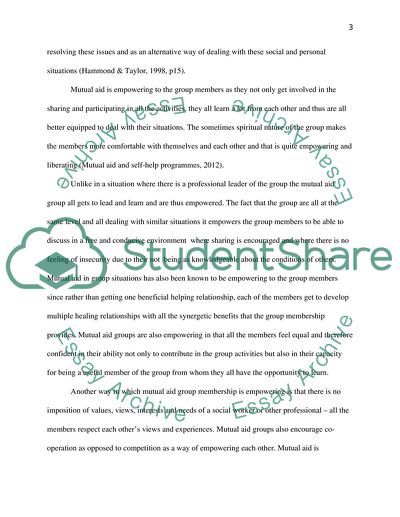Cite this document
(The Potential of Group Work to Promote Mutual Aid and Empowerment Essay, n.d.)
The Potential of Group Work to Promote Mutual Aid and Empowerment Essay. https://studentshare.org/social-science/1621425-analyse-the-potential-of-group-work-to-promote-mutual-aid-and-empowerment
The Potential of Group Work to Promote Mutual Aid and Empowerment Essay. https://studentshare.org/social-science/1621425-analyse-the-potential-of-group-work-to-promote-mutual-aid-and-empowerment
(The Potential of Group Work to Promote Mutual Aid and Empowerment Essay)
The Potential of Group Work to Promote Mutual Aid and Empowerment Essay. https://studentshare.org/social-science/1621425-analyse-the-potential-of-group-work-to-promote-mutual-aid-and-empowerment.
The Potential of Group Work to Promote Mutual Aid and Empowerment Essay. https://studentshare.org/social-science/1621425-analyse-the-potential-of-group-work-to-promote-mutual-aid-and-empowerment.
“The Potential of Group Work to Promote Mutual Aid and Empowerment Essay”. https://studentshare.org/social-science/1621425-analyse-the-potential-of-group-work-to-promote-mutual-aid-and-empowerment.


